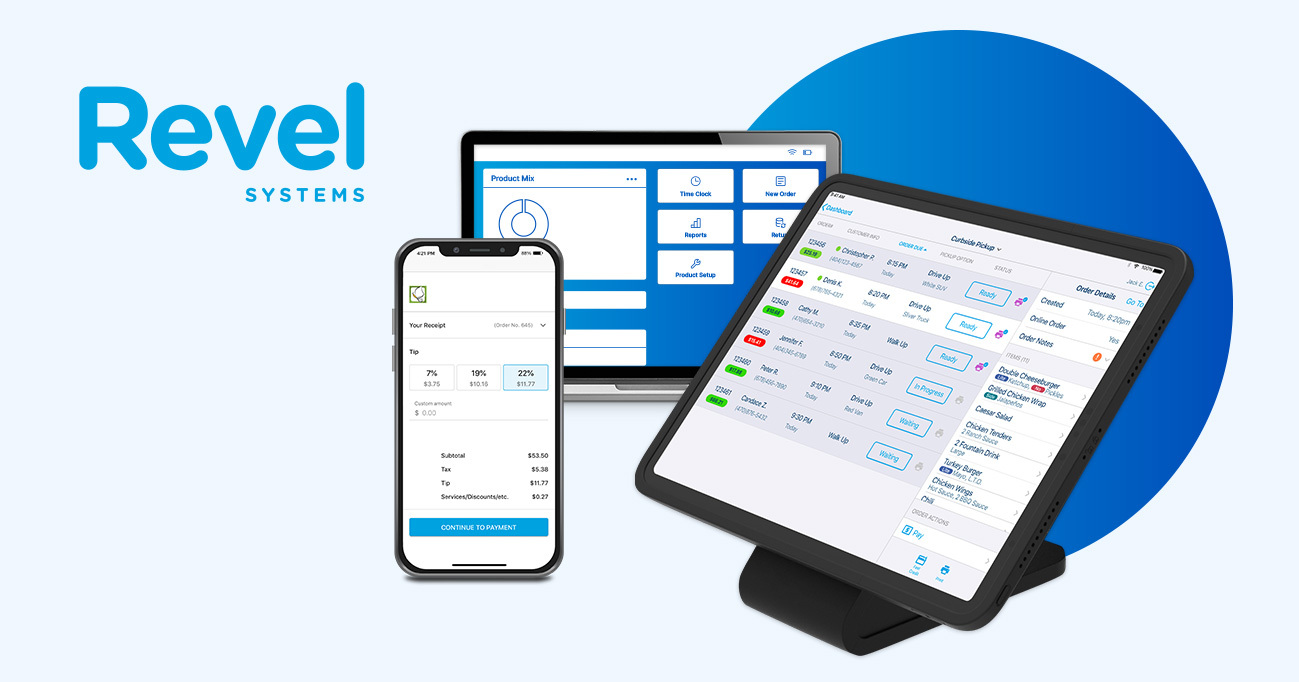Call Sales: +1 (833) 437-3835
Call Sales: +1 (833) 437-3835
Revel | April 14, 2017 |

Are you operating your business based on data-driven decisions?
In today’s competitive landscape, business owners and managers need to understand key performance metrics and how to interpret data sets in order to survive and thrive in their respective industries. Here are three types data that you can analyze and channel into wins for your business:
Sales Data
Your sales data is key to understanding your gross revenue and what drives your top line. As a business owner or manager, you should evaluate total number of transactions as well as average transaction size to gauge what your optimal sales mix looks like. You should also look at product mix to see which items sell the most or contribute the greatest amount of revenue to the gross margin. Understanding sales data lets you know what items are the most popular with your customers, what you may need to work on an upsell strategy for, or what you may need to discontinue or 86 from your product mix.
Inventory & Operational Data
Inventory data is key in managing overhead costs and calculating ratios such as average inventory and inventory turnover. These are operational expenses that affect your bottom line profits. Understanding these analytics are essential to improving efficiencies.
For restaurants, evaluating table turn times and translating that into the Revenue per Available Seat metric. This helps you benchmark an efficiency that is directly correlated to your sales data. For retailers, a good metric to consider is sales per square foot. This helps evaluate the efficiency of the space and how effective the team is at displaying and marketing merchandise in relation to sales.
In any business, understanding employee performance and peak sales times are key for strategic cost management. Tracking these types of data can tell you when your busiest times are and what the optimal number of employees to have on the clock at any given time will be.
Customer & Marketing Data
There is a wealth of data that can be collected surrounding customer profiles. Some marketers prefer to look at demographic and psychographic information, while others tend to seek out data on the customer journey with their concept or brand.
Implementing a Customer Relationship Management System (CRM) helps you collect information on who your customers are and what they like to purchase from you. There are many database platforms on the market that can aggregate customer information and help you market towards different groups or segments. The data for each customer begins with a purchase and chronicles their buying habits. This helps you profile your customers and effectively market to them. Leveraging a loyalty program can also be helpful as it provides you with data surrounding your best customers and can even help you with client retentions and building an ideal customer profile.
Benefits of Taking the Time to Analyze
After diving deeper into your analytics, you can compare sets of information over time. Maintaining historical data week over week, month over month, and year over year allows you to benchmark your progress and better understand the factors contributing to the growth of your operation.
For example, understanding factors such as your highest and lowest sellers shows you what to produce more of and what to produce less of. Factoring in historical information can help you forecast to reduce waste and keeps operating costs down. Another benefit of knowing your peak business times as well as the slower times is that you will be able to make educated decisions about whether or not to keep your business open for an extra hour and when to cut people from the staff. Tracking metrics like these over time will help you successfully earn more revenue and improve efficiencies from COGS to labor cost percentage.
If you’re short on time and need your data to go, you can achieve this with a cloud hosted platform as well as a mobile insights app. Products like these are becoming increasingly popular so busy managers can access their data anytime, anyplace.
Tools for Success
Leveraging the right tools to analyze large data sets saves you time and effort. Choosing the right platforms for your business technology stack can help you generate and analyze information that can be used to help you increase profits, engage your customer base, and run a leaner operation.
For example, a restaurant could use platforms such as Ctuit or Avero to understand the analytics behind their labor costs, peak sales times, product mix, and menu engineering. A retailer may want to use an email marketing software such as MailChimp or Emma along Google AdWords or Facebook Advertising to capture and understand customer behaviour as well as how promotion can translate to both online sales and offline, in-store conversions.
Additionally, any brick-and-mortar can leverage a cloud-based iPad POS System that has all the tools you need to report on customer relations, sales, inventory, and employee performance. The ability to export data from your POS and related platforms into spreadsheets is also useful in painting a full picture of the health of your operation. Knowing how to model and forecast this information will set you ahead of the curve in your industry.
Looking to leverage your data into smarter business decisions? Tells us a bit about your business and we can show you how Revel’s POS Platform provides you with all the relevant reporting and analytics to understand performance and achieve your business goals.